15307-86-5
| Name | diclofenac |
|---|---|
| Synonyms |
2-{2-[(2,6-dichlorophenyl)amino]phenyl}acetic acid
Benzeneacetic acid, 2-((2,6-dichlorophenyl)amino)- 2-(2-((2,6-dichlorophenyl)amino)phenyl)acetic acid Acetic acid, (o-(2,6-dichloroanilino)phenyl)- 2-[[2,6-Dichlorophenyl]amino]benzeneacetic acid MFCD00451393 2-((2,6-dichlorophenyl)amino)benzeneacetic acid Diclofenac acid 2-[2-[(2,6-dichlorophenyl)amino]phenyl]acetic acid N-(2,6-Dichlorophenyl)-o-aminophenylacetic Acid Zorvolex EINECS 239-348-5 {2-[(2,6-Dichlorophenyl)amino]phenyl}acetic acid [2-(2,6-dichloroanilino)phenyl]acetic acid Benzeneacetic acid, 2-[(2,6-dichlorophenyl)amino]- Motifene (o-(2,6-Dichloroanilino)phenyl)acetic Acid |
| Description | Diclofenac is a potent and nonselective anti-inflammatory agent, acts as a COX inhibitor, with IC50s of 4 nM, 1.3 nM for human COX-1 and COX-2 in CHO cells, and 5.1, 0.84 μM for ovine COX-1 and COX-2, respectively. |
|---|---|
| Related Catalog | |
| Target |
Human COX-2:1.3 nM (IC50, in CHO cells) Human COX-1:4 nM (IC50, in CHO cells) Ovine COX-2:0.84 μM (IC50) Ovine COX-1:5.1 μM (IC50) |
| In Vitro | Diclofenac is a potent COX inhibitor, with IC50s of 4 nM and 1.3 nM for human COX-1 and COX-2 in the CHO cells, respectively. Diclofenac effectively blocks COX-1 mediated prostanoid production from U937 cell microsomes, with an IC50 of 7 ± 3 nM[1]. Diclofenac sodium exihibits inhibition on COX-1 and COX-2 enzyme with IC50s of 5.1 and 0.84 μM, respectively[2]. |
| In Vivo | Diclofenac (3 mg/kg, b.i.d., for 5 days) significantly increases faecal 51Cr excretion in rats, and such effect is also observed in squirrel monkeys after administrated of 1 mg/kg twice daily for 4 days[1]. Diclofenac (10 mg/kg) shows anti-inflammatory activity in mice[2]. Diclofenac (10 mg/kg) decreases oxidized low-densitylipoprotein (Ox-LDL), but shows no effects on the kinetics parameters of catalase and glutathione peroxidase via intramuscularly injection into rats[3]. |
| Animal Admin | Rats[1] Male Sprague-Dawley rats (150 ± 200 g) are dosed orally with Diclofenac either once (acute dosing) or twice daily for 5 days (chronic dosing). A plasma sample is obtained 1 h after the morning dose on day 4 for measurement of Diclofenac concentration. Immediately after the administration of the last dose on day 5, the rats are injected via a tail vein with 0.5 mL of 51Cr-labelled red blood cells from a donor rat after incubation with sodium 51chromate. The rats are placed individually in metabolism cages with food and water ad libitum. Faeces are collected for a 48 h period and 51Cr faecal excretion is calculated as a % of total injected dose (20 mCi per animal)[1]. Squirrel monkeys[1] Squirrel monkeys (Saimiri sciureus; 0.8 ± 1.4 kg) are dosed orally with Diclofenac twice daily for 1 ± 5 days. One hour after administration of the last dose, 51CrCl3 in sterile saline (1 mL/kg, 4 ± 5 mCi per animal) is injected via a saphenous vein and plasma samples are obtained for measurement of Diclofenac concentration. The monkeys are then housed individually in metabolism cages. Faeces are collected for a 24 h period and 51Cr faecal excretion is calculated as a % of total injected dose[1]. |
| References |
| Density | 1.4±0.1 g/cm3 |
|---|---|
| Boiling Point | 412.0±45.0 °C at 760 mmHg |
| Melting Point | 156-158ºC |
| Molecular Formula | C14H11Cl2NO2 |
| Molecular Weight | 296.149 |
| Flash Point | 203.0±28.7 °C |
| Exact Mass | 295.016693 |
| PSA | 49.33000 |
| LogP | 4.06 |
| Vapour Pressure | 0.0±1.0 mmHg at 25°C |
| Index of Refraction | 1.662 |
|
2-(2,6-Dichloroanilino)phenylacetic Acid
Revision number: 5
SAFETY DATA SHEET Section1. IDENTIFICATION Product name:2-(2,6-Dichloroanilino)phenylacetic Acid Revision number:5 Section2. HAZARDS IDENTIFICATION GHS classification PHYSICAL HAZARDSNot classified HEALTH HAZARDS Acute toxicity (Oral)Category 3 Not classified ENVIRONMENTAL HAZARDS GHS label elements, including precautionary statements Pictograms or hazard symbols Signal wordDanger Hazard statementsToxic if swallowed Precautionary statements: [Prevention]Do not eat, drink or smoke when using this product. Wash hands thoroughly after handling. IF SWALLOWED: Immediately call a POISON CENTER or doctor/physician. Rinse [Response] mouth. Store locked up. [Storage] [Disposal]Dispose of contents/container through a waste management company authorized by the local government. Section3. COMPOSITION/INFORMATION ON INGREDIENTS Substance/mixture:Substance Components:2-(2,6-Dichloroanilino)phenylacetic Acid Percent:>98.0%(GC)(T) CAS Number:15307-86-5 Synonyms:Diclofenac Chemical Formula:C14H11Cl2NO2 Section4. FIRST AID MEASURES Inhalation:Remove victim to fresh air and keep at rest in a position comfortable for breathing. Get medical advice/attention if you feel unwell. Skin contact:Remove/Take off immediately all contaminated clothing. Rinse skin with water/shower. If skin irritation or rash occurs: Get medical advice/attention. 2-(2,6-Dichloroanilino)phenylacetic Acid Section4. FIRST AID MEASURES Eye contact:Rinse cautiously with water for several minutes. Remove contact lenses, if present and easy to do. Continue rinsing. If eye irritation persists: Get medical advice/attention. Ingestion:Immediately call a POISON CENTER or doctor/physician. Rinse mouth. Protection of first-aiders:A rescuer should wear personal protective equipment, such as rubber gloves and air- tight goggles. Section5. FIRE-FIGHTING MEASURES Dry chemical, foam, water spray, carbon dioxide. Suitable extinguishing media: Specific hazards arising Take care as it may decompose upon combustion or in high temperatures to from the chemical:generate poisonous fume. Precautions for firefighters: Fire-extinguishing work is done from the windward and the suitable fire-extinguishing method according to the surrounding situation is used. Uninvolved persons should evacuate to a safe place. In case of fire in the surroundings: Remove movable containers if safe to do so. Special protectiveWhen extinguishing fire, be sure to wear personal protective equipment. equipment for firefighters: Section6. ACCIDENTAL RELEASE MEASURES Personal precautions,Use extra personal protective equipment (P3 filter respirator for toxic particles). Keep protective equipment and people away from and upwind of spill/leak. Entry to non-involved personnel should emergency procedures: be controlled around the leakage area by roping off, etc. Environmental precautions: Prevent product from entering drains. Methods and materials for Sweep dust to collect it into an airtight container, taking care not to disperse it. containment and cleaning Adhered or collected material should be promptly disposed of, in accordance with up: appropriate laws and regulations. Section7. HANDLING AND STORAGE Precautions for safe handling Technical measures:Handling is performed in a well ventilated place. Wear suitable protective equipment. Prevent dispersion of dust. Wash hands and face thoroughly after handling. Use a closed system if possible. Use a local exhaust if dust or aerosol will be generated. Advice on safe handling: Avoid contact with skin, eyes and clothing. Conditions for safe storage, including any incompatibilities Storage conditions:Keep container tightly closed. Store in a cool and dark place. Store locked up. Store away from incompatible materials such as oxidizing agents. Packaging material:Comply with laws. Section8. EXPOSURE CONTROLS / PERSONAL PROTECTION Engineering controls:Install a closed system or local exhaust. Also install safety shower and eye bath. Personal protective equipment Respiratory protection: Dust respirator, self-contained breathing apparatus(SCBA), supplied air respirator, etc. Use respirators approved under appropriate government standards and follow local and national regulations. Impervious gloves. Hand protection: Eye protection:Safety goggles. A face-shield, if the situation requires. Skin and body protection: Impervious protective clothing. Protective boots, if the situation requires. Section9. PHYSICAL AND CHEMICAL PROPERTIES Physical state (20°C):Solid Form:Crystal- Powder White - Very pale yellow Colour: 2-(2,6-Dichloroanilino)phenylacetic Acid Section9. PHYSICAL AND CHEMICAL PROPERTIES Odour:No data available pH: No data available Melting point/freezing point:158°C (dec.) Boiling point/range:No data available Flash point:No data available Flammability or explosive limits: Lower:No data available Upper:No data available Relative density:No data available Solubility(ies): [Water]No data available [Other solvents] Soluble:Methanol Log Pow:3.03 Section10. STABILITY AND REACTIVITY Chemical stability:Stable under proper conditions. Possibility of hazardous No special reactivity has been reported. reactions: Incompatible materials: Oxidizing agents Hazardous decomposition Carbon monoxide, Carbon dioxide, Nitrogen oxides (NOx), Hydrogen chloride products: Section11. TOXICOLOGICAL INFORMATION Acute Toxicity:orl-rat LD50:62500 ug/kg ipr-mus LD50:345 mg/kg Skin corrosion/irritation: No data available Serious eyeNo data available damage/irritation: Germ cell mutagenicity: No data available Carcinogenicity: IARC =No data available NTP =No data available Reproductive toxicity:No data available RTECS Number:AG6310000 Section12. ECOLOGICAL INFORMATION Ecotoxicity: No data available Fish: Crustacea:No data available No data available Algae: Persistence / degradability: No data available No data available Bioaccumulative potential(BCF): Mobility in soil Log Pow:3.03 No data available Soil adsorption (Koc): Henry's LawNo data available constant(PaM3/mol): Section13. DISPOSAL CONSIDERATIONS Recycle to process, if possible. Consult your local regional authorities. You may be able to dissolve or mix material with a combustible solvent and burn in a chemical incinerator equipped with an afterburner and scrubber system. Observe all federal, state and local regulations when disposing of the substance. 2-(2,6-Dichloroanilino)phenylacetic Acid Section14. TRANSPORT INFORMATION Hazards Class:6.1: Toxic substance. UN-No:2811 Proper shipping name:Toxic solid, organic, n.o.s. Packing group:III Section15. REGULATORY INFORMATION Safe management ordinance of dangerous chemical product (State Council announces on January 26, 2002 and revised on February 16,2011): Safe use and production, the storage of a dangerous chemical, transport, loading and unloading were prescribed. SECTION 16 - ADDITIONAL INFORMATION N/A |
CHEMICAL IDENTIFICATION
HEALTH HAZARD DATAACUTE TOXICITY DATA
|
| Hazard Codes | Xi |
|---|---|
| RIDADR | 3249 |
| Packaging Group | III |
| Hazard Class | 6.1(b) |
| HS Code | 2942000000 |
| Precursor 7 | |
|---|---|
| DownStream 6 | |
| HS Code | 2922499990 |
|---|---|
| Summary | HS:2922499990 other amino-acids, other than those containing more than one kind of oxygen function, and their esters; salts thereof VAT:17.0% Tax rebate rate:9.0% Supervision conditions:AB(certificate of inspection for goods inward,certificate of inspection for goods outward) MFN tariff:6.5% General tariff:30.0% |



![2-[(2,6-Dichlorophenyl)amino]-N,N-dimethylbenzeneacetamide structure](https://image.chemsrc.com/caspic/225/21789-06-0.png)

![2-[(2,6-dichlorophenyl)-N-benzylamino]-phenylacetic acid structure](https://image.chemsrc.com/caspic/399/70690-44-7.png)

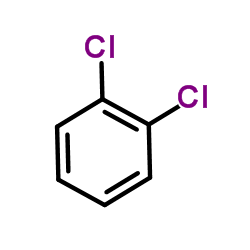
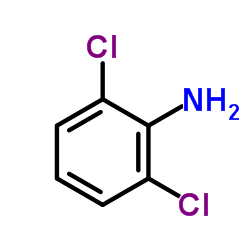
![2-[(2,6-dichlorophenyl)amino]-α-(methylthio)phenylacetic acid structure](https://image.chemsrc.com/caspic/434/83281-95-2.png)
![2-[2-(2,6-dichloroanilino)phenyl]ethanol structure](https://image.chemsrc.com/caspic/108/30124-09-5.png)
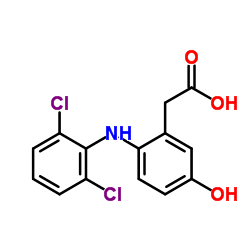
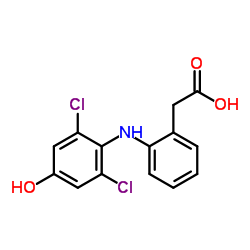
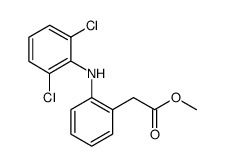
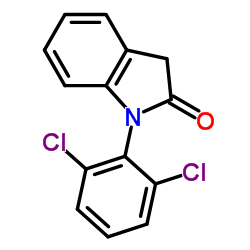
![pyridin-3-yl 2-[2-(2,6-dichloroanilino)phenyl]acetate structure](https://image.chemsrc.com/caspic/278/51998-02-8.png)